-
Wetland preservation is good business
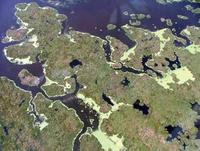
A recently published study is making the case for wetland preservation by highlighting the economic incentives that such preservation could provide to urban centers.Infrastructure investment in urban waterfronts could soon be seen as one of the best economic decisions a city could make. The National Oceanic and Atmospheric Administration says that “$1 million invested in coastal restoration creates 17.1 jobs, compared to just 8.9 jobs for every $1 million invested in oil and gas development.”
-
-
Longer periods of tornado activity are more destructive, but also more predictable
Significant tornado outbreaks, and especially strong tornadoes, are more likely occur within periods of activity lasting three or more days, according to a new study. The study examined thirty years of U.S. weather records and found that an outbreak of twenty or more reported tornadoes had a 74 percent probability of occurring during a period of tornado activity lasting three or more days. During those same periods, a tornado rated 3 or higher on the Enhanced Fujita scale had a 60 percent probability of hitting.
-
-
Producing more oil by capturing carbon
Any method that leads to the production of more oil seems counter to the prevailing wisdom on climate change that says use of more greenhouse-gas-emitting fuel is detrimental. There is one oil-recovery process, however, which some say could be part of the climate change solution and now unites unlikely allies in industry, government and environmental groups.
-
-
More crude oil shipments by rail mean more accidents, but security measures lag
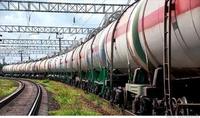
American rail companies have long operated under federal laws, making it difficult for local officials to gather information on cargo and how rail companies select their routes. An increase in the number of trains transporting crude oil, accompanied by a series of derailments and explosions, has highlighted the dangers of transporting hazardous substances by rail.In February, the Department of Transportation announced that railroads had voluntarily agreed to apply the same routing rules to oil trains that they currently apply to other hazardous materials. Critics say more needs to be done.
-
-
Oklahoma worries that fracking-induced earthquakes threaten the state’s bridges
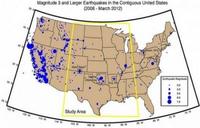
Many residents in Oklahoma are questioning whether hydraulic fracking is to blame for the sudden increase in earthquakes, but for transportation officials, the security of the state’s 6,800 bridges is the immediate concern. There are 468 bridges in Oklahoma which are classified as “structurally deficient,” and most were not built with frequent earthquakes in mind. Earthquakes have become so common, however, that inspectors have had to inspect bridges several times a week.
-
-
Florida moves to protect coastal roads from sea level rise
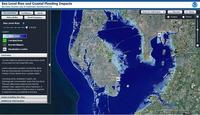
Alton Road is a few blocks west of the Atlantic Ocean, and is Miami Beach’s lowest point, at 2.8 feet above sea level. Trouble is, as a result of sea level rise, inundation tide now routinely reaches 3.4 feet above sea level. Geologist have long warned of the impact sea level rise would have on Florida’s coastal infrastructure, and they view Alto Road as Ground Zero, saying that at some point in the near future, water from flooding will not recede. The Florida Department of Transportation (FDOT) is taking steps to protect coastal transportation infrastructure from sea level rise.
-
-
Birds in and around Chernobyl's exclusion zone adapting to ionizing radiation

Birds in the exclusion zone around Chernobyl are adapting to — and may even be benefiting from — long-term exposure to radiation, ecologists have found. The study is first evidence that wild animals adapt to ionizing radiation, and the first to show that birds which produce most pheomelanin, a pigment in feathers, have greatest problems coping with radiation exposure.
-
-
Businesses take more responsibility for sustainable freshwater use
Growing freshwater scarcity owing to rising water demands and a changing climate is increasingly perceived as a major risk for the global economy. In a special issue of Nature Climate Change, devoted to this emerging global concern, researchers argue that consumer awareness, private sector initiatives, governmental regulation, and targeted investments are urgently necessary to move toward sustainable water use across value chains.
-
-
Threats from insiders are the most serious security challenges nuclear facilities face

Insider threats are the most serious challenge confronting nuclear facilities in today’s world, a new study says. In every case of theft of nuclear materials where the circumstances of the theft are known, the perpetrators were either insiders or had help from insiders, the study found. Theft is not the only danger facing facility operators; sabotage is a risk as well, the study authors say.
-
-
New York public transit systems preparing for sea-level rise
The Metropolitan Transportation Authority (MTA), which operates many New York state public transit lines, is beginning measures to factor for future sea-level rises within its projected five-year capital plans.Tobey Ritz, chief engineer of capital engineering at Metro-North, said: “It’s not so much for us to pick which study [of sea-level rise] is right, but to look at the entire range [of sea-level rise predictions], look at the time frames that are predicted and then consider when is the right time to act.”
-
-
Intelligent urban planning to drive climate change solutions
A leaked report from the Intergovernmental Panel on Climate Change (IPCC) suggests that intelligent urban planning and investment in public transportation, especially in developing countries, could be the key factors in lower greenhouse gas emissions and reversing the effects of climate change.
-
-
Promoting nuclear power to avoid geoengineering
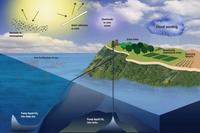
There are two basic geoengineering strategies to reduce climate change: injecting aerosols such as sulfates into the stratosphere to block a portion of the sun’s radiation and thereby cool the Earth, much as volcanic emissions do; and the large-scale removal of carbon dioxide from the atmosphere. The aerosol-injection approach is much more likely to be pursued at current stages of technological development. Scientists say that in order to avoid the need for geoengineering, which could have enormous unforeseen consequences, the international community should pursue increased deployment of nuclear power plants, which do not emit carbon dioxide, to address the climate crisis. Many climate scientists are generally supportive of nuclear engineering and less fearful of it than they are of geoengineering.
-
-
Major step toward stronger encryption technology announced
Researchers the other day announced the first successful trial of Quantum Key Distribution (QKD) technology over a live “lit” fiber network. The trial paves the way for more advanced research into QKD, the next frontier of data encryption technology, which will deliver even greater levels of network security.
-
-
Odds of storm waters overflowing Manhattan seawall up 20-fold, new study says

Maximum water levels in New York harbor during major storms have risen by nearly two and a half feet since the mid-1800s, making the chances of water overtopping the Manhattan seawall now at least twenty times greater than they were 170 years ago, according to a new study. Whereas sea-level rise, which is occurring globally, has raised water levels along New York harbor by nearly a foot and a half since the mid-nineteenth century, the research shows that the maximum height of the city’s “once-in-10-years” storm tide has grown additionally by almost a foot in that same period.
-
-
Emergency water treatment guidelines questioned
During floods and other emergencies, treating water for drinking is a must, but how to do it is up for debate. The Environmental Protection Agency’s (EPA’s) recommendations for treating water after a natural disaster or other emergencies call for more chlorine bleach than is necessary to kill disease-causing pathogens and are often impractical to carry out, a new study has found.
-
More headlines
The long view
Water Wars: A Historic Agreement Between Mexico and US Is Ramping Up Border Tension
As climate change drives rising temperatures and changes in rainfall, Mexico and the US are in the middle of a conflict over water, putting an additional strain on their relationship. Partly due to constant droughts, Mexico has struggled to maintain its water deliveries for much of the last 25 years, deliveries to which it is obligated by a 1944 water-sharing agreement between the two countries.
Trump Is Fast-Tracking New Coal Mines — Even When They Don’t Make Economic Sense
In Appalachian Tennessee, mines shut down and couldn’t pay their debts. Now a new one is opening under the guise of an “energy emergency.”
Smaller Nuclear Reactors Spark Renewed Interest in a Once-Shunned Energy Source
In the past two years, half the states have taken action to promote nuclear power, from creating nuclear task forces to integrating nuclear into long-term energy plans.
Keeping the Lights on with Nuclear Waste: Radiochemistry Transforms Nuclear Waste into Strategic Materials
How UNLV radiochemistry is pioneering the future of energy in the Southwest by salvaging strategic materials from nuclear dumps –and making it safe.
Model Predicts Long-Term Effects of Nuclear Waste on Underground Disposal Systems
The simulations matched results from an underground lab experiment in Switzerland, suggesting modeling could be used to validate the safety of nuclear disposal sites.
